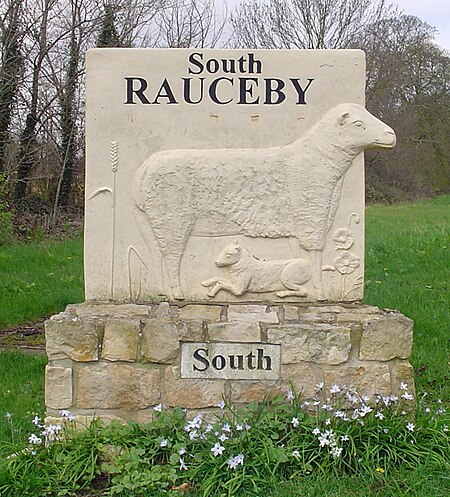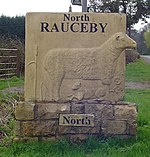South Rauceby

South Rauceby is a village and civil parish in the North Kesteven district of Lincolnshire, England. It is situated 2.5 miles (4.0 km) west from Sleaford. The village of North Rauceby is less than 1 mile (1.6 km) to the north. The 2001 Census recorded a village population of 330 in 161 household, increasing to 367 at the 2011 census.Rauceby village hall is situated on Main Street and serves both North and South Rauceby. It provides for village clubs and events, and the Rauceby Pre-School which serves the local community and surrounding area. The village's public house is the Bustard Inn, a Grade II listed building. Other listed buildings, also designated Grade II, include a windmill, now a house, built c. 1840, and South Rauceby Hall.A daily bus service on the Grantham to Sleaford route is provided by Centrebus. Rauceby railway station, adjoining the A153 road, is less than 1 mile to the south-east.
Excerpt from the Wikipedia article South Rauceby (License: CC BY-SA 3.0, Authors, Images).South Rauceby
Main Street, North Kesteven South Rauceby
Geographical coordinates (GPS) Address Nearby Places Show on map
Geographical coordinates (GPS)
| Latitude | Longitude |
|---|---|
| N 52.996833 ° | E -0.474171 ° |
Address
Main Street
Main Street
NG34 8QQ North Kesteven, South Rauceby
England, United Kingdom
Open on Google Maps










